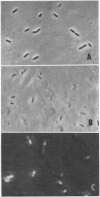Abstract
Bacillus popilliae and B. lentimorbus grew most rapidly and to the greatest extent in aerated cultures at 30 to 32 C with oxygen absorption rates of 1 mmole of O2 per min per liter, or above. The control of pH also increased the maximal populations attained. Media were developed which consistently produced cell populations of about 109 within 24 to 48 hr in aerated cultures of these two species. The acetic acid produced in highly aerated cultures was shown not to be responsible for the rapid loss of cell viability in stationary phase cultures. However, H2O2 was very lethal to cells of B. popilliae, and this species is known to have the capacity to produce it. Stationary-phase cells were partially stabilized by reducing the availability of oxygen after 24 hr of incubation on a shaker, and the addition of low levels of glucose further stabilized the cells. The most stable cells were those produced in a medium in which 4% Trypticase (BBL) and 0.1% barbituric acid were incorporated. A high percentage of these cells contained refractile bodies visible under a phase microscope. Although these bodies were not heat-resistant and lacked other characteristics of endospores, cells in cultures containing them had reasonably high viability for extended periods, as compared with those in control cultures.
Full text
PDF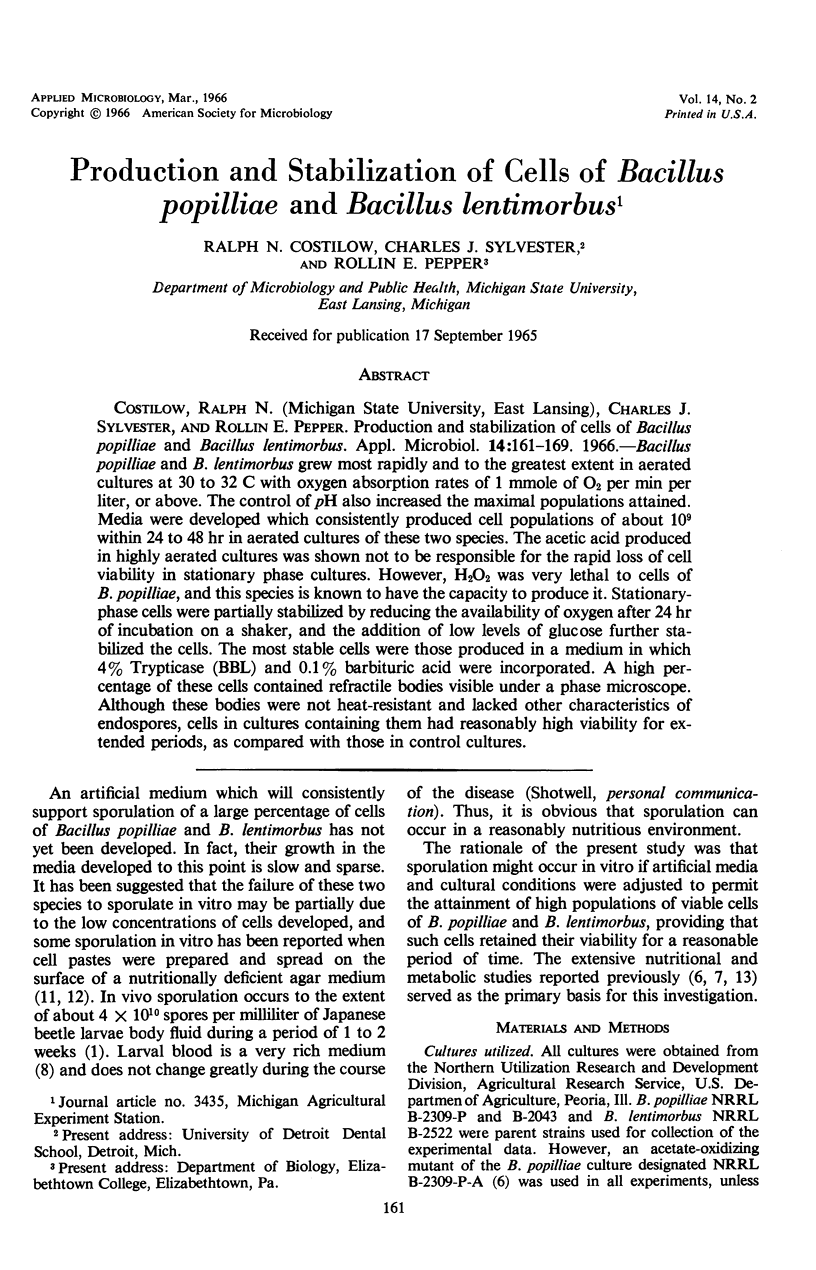
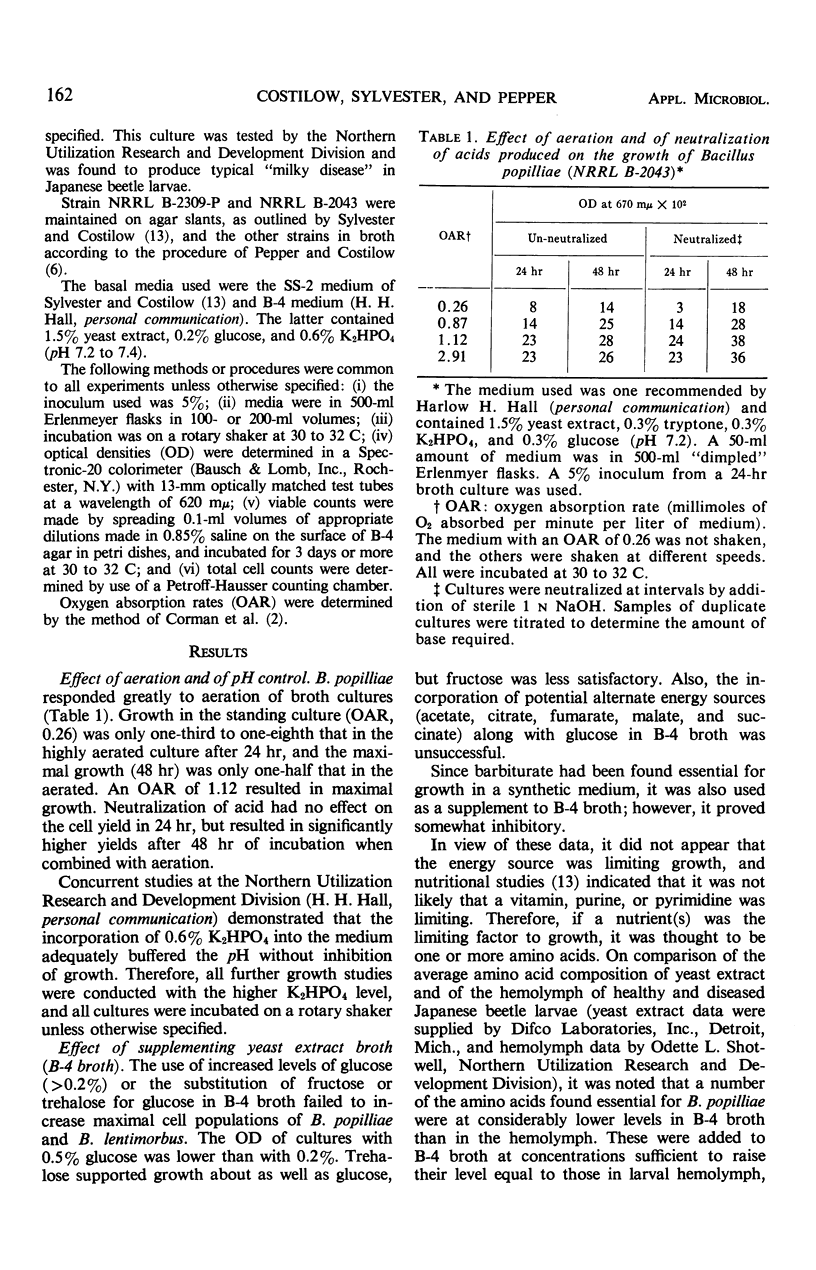
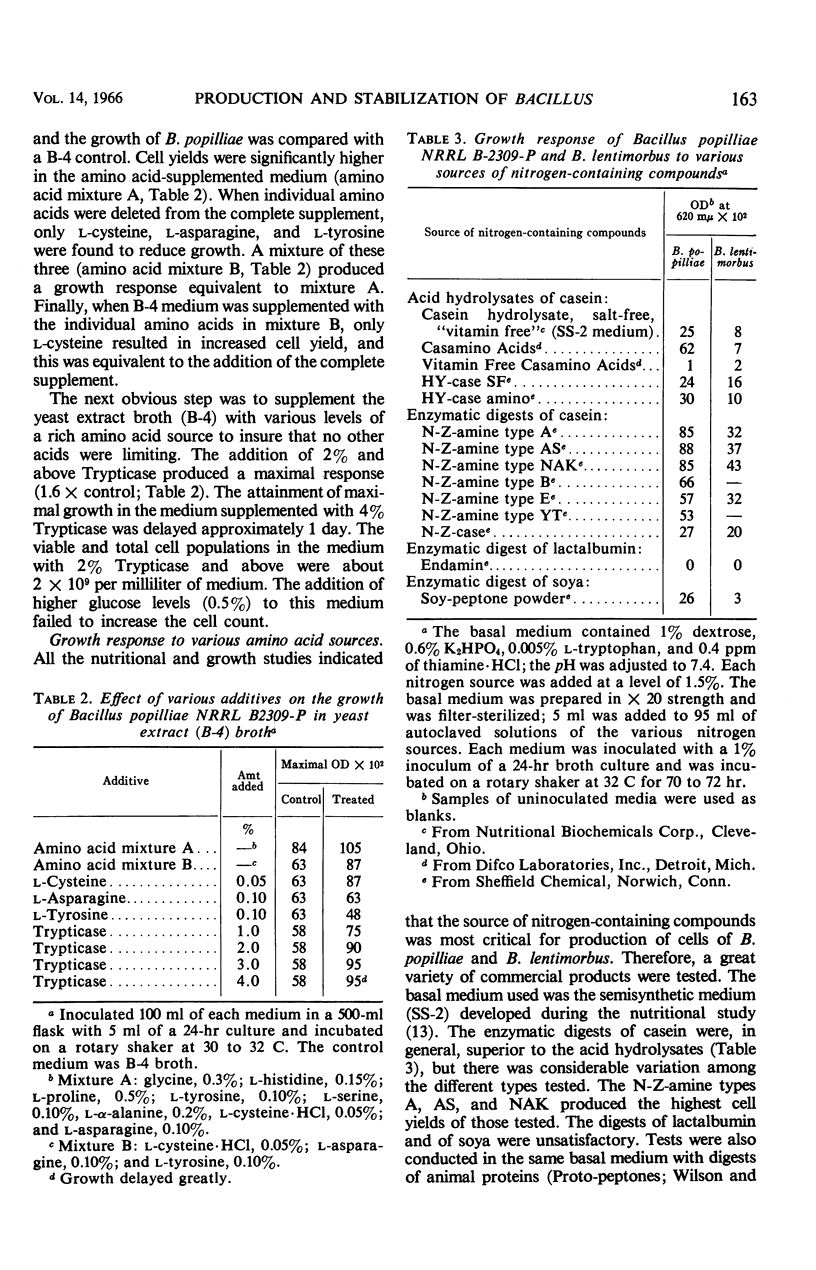
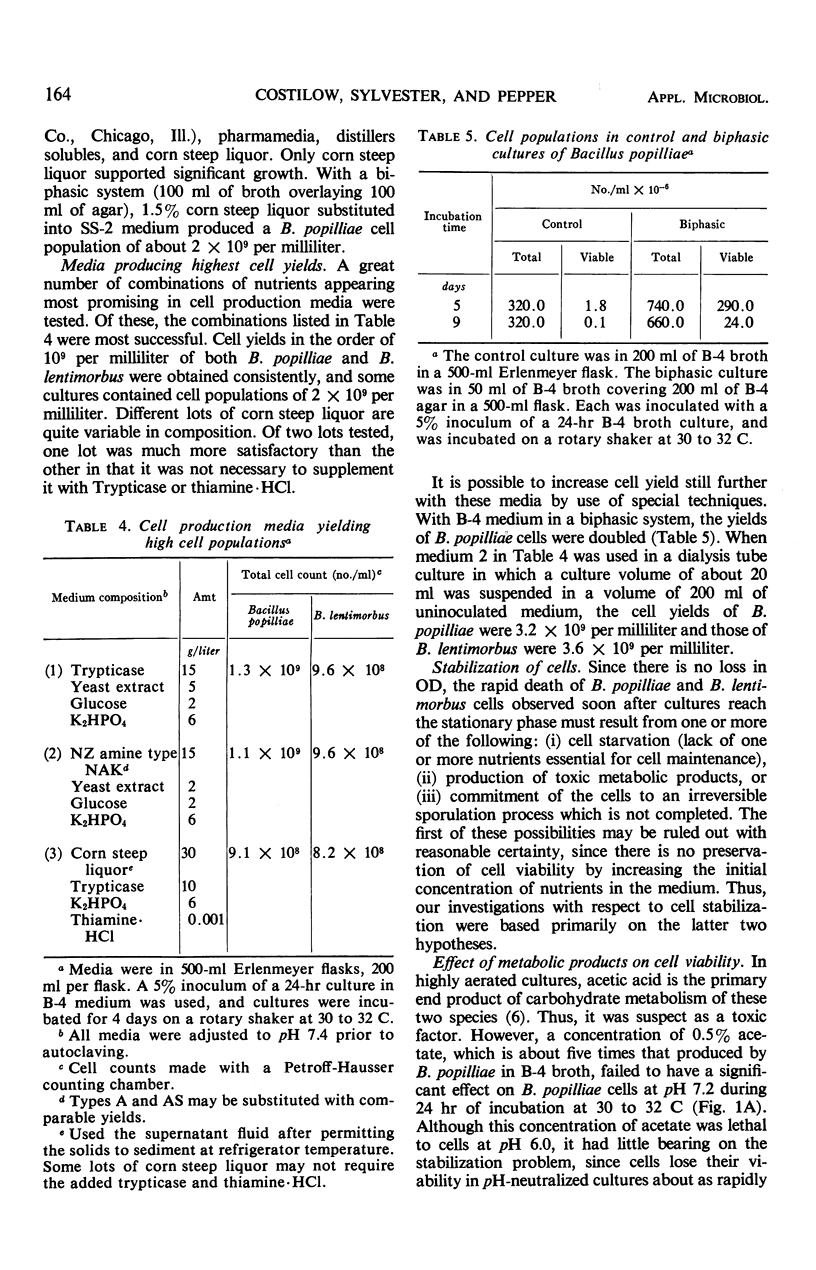
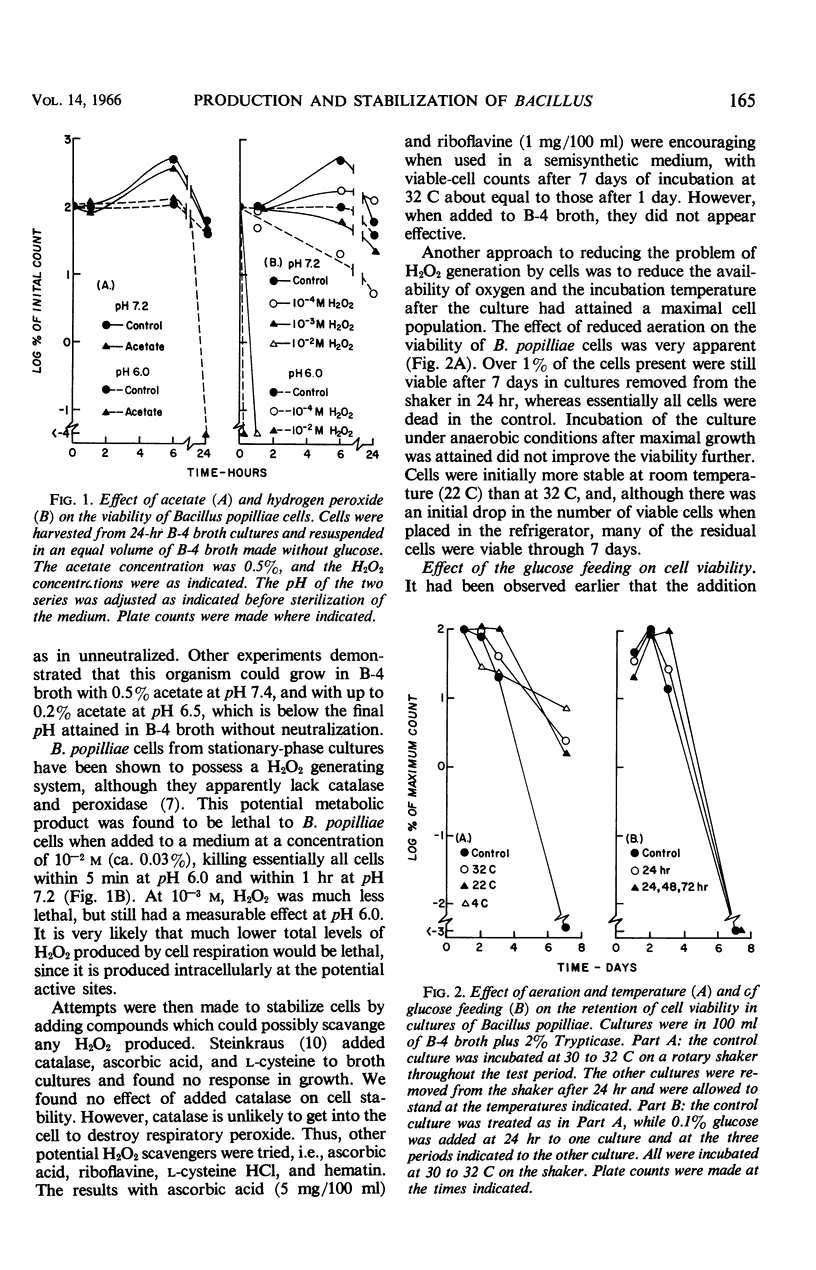
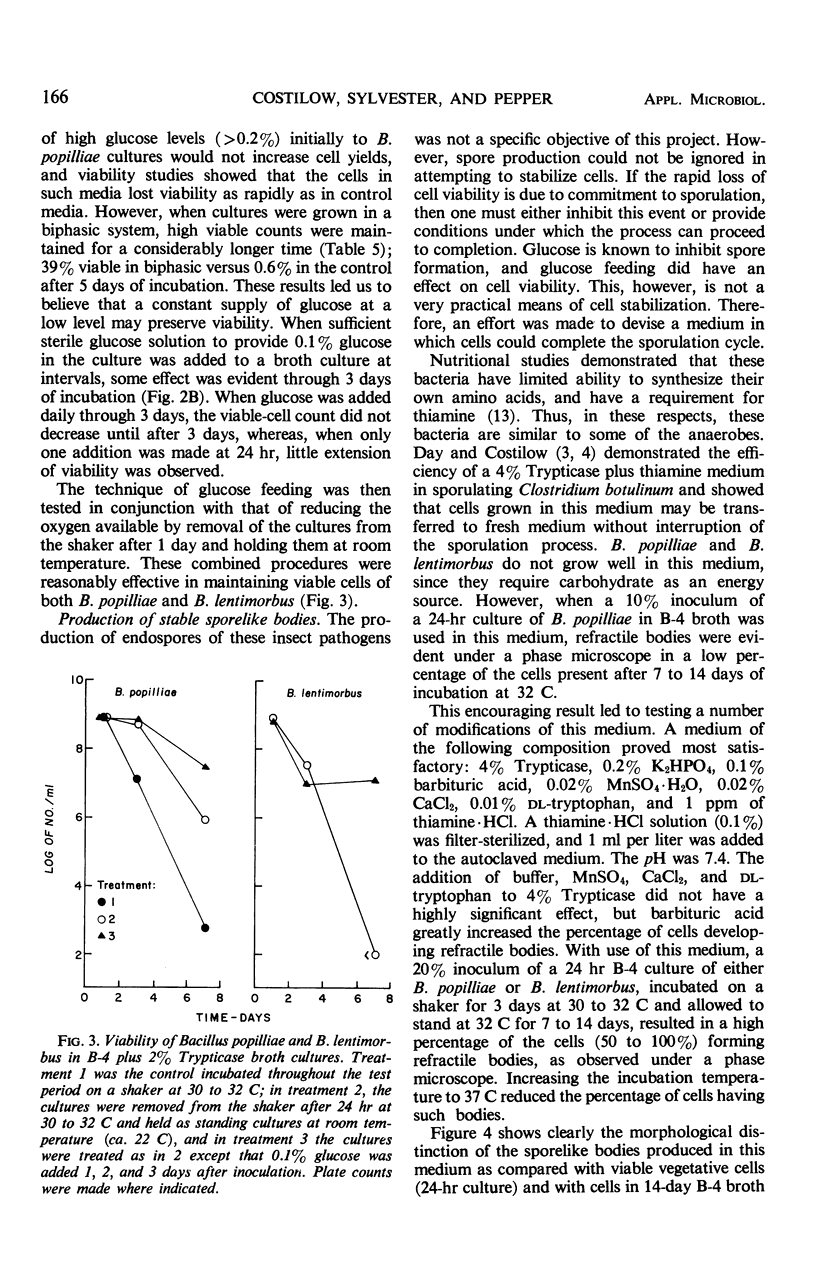
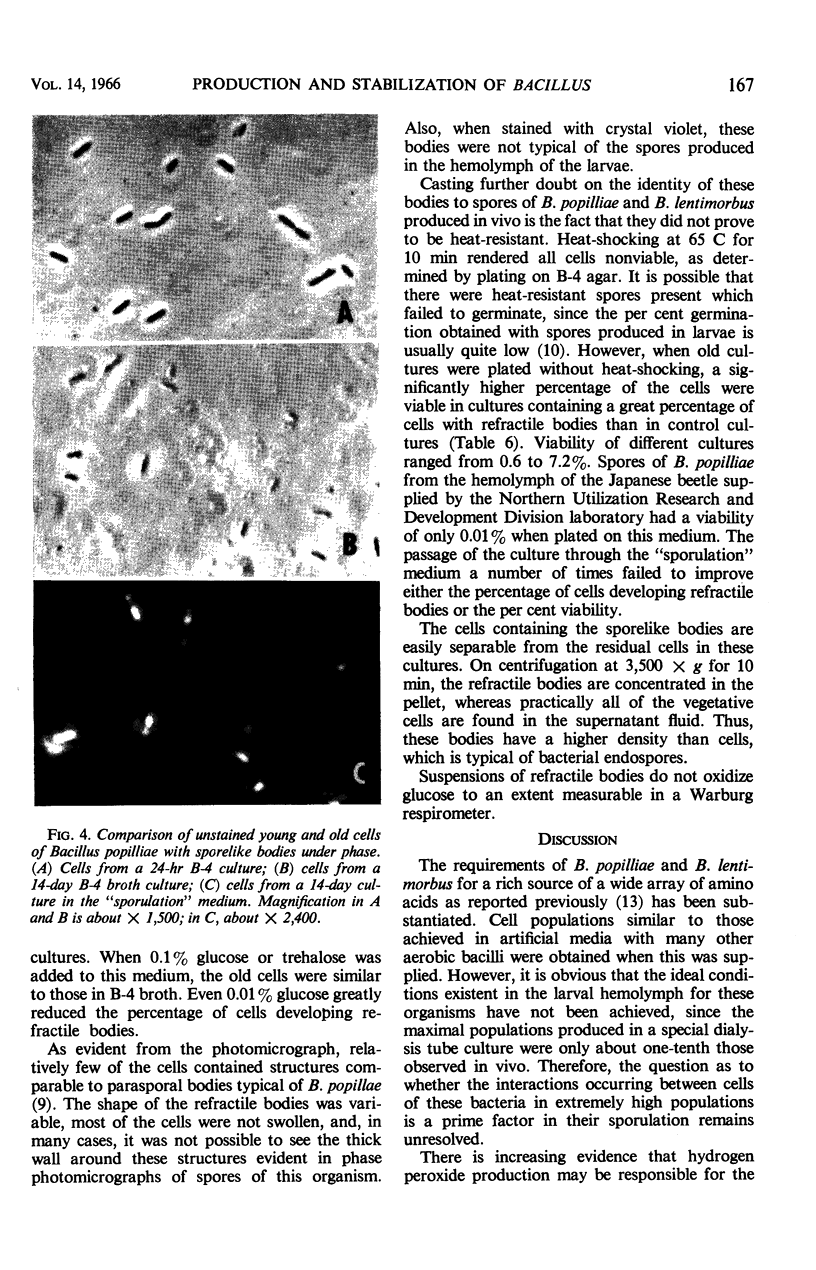
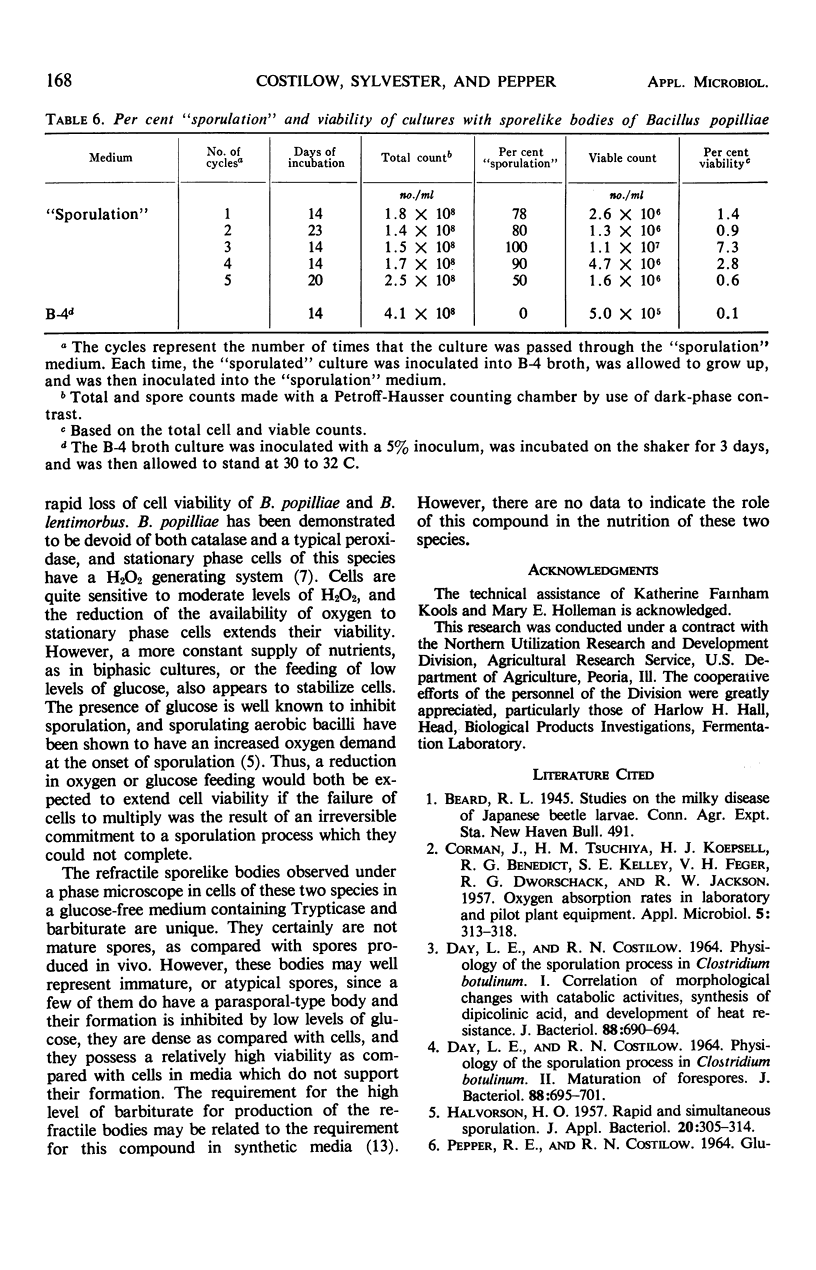
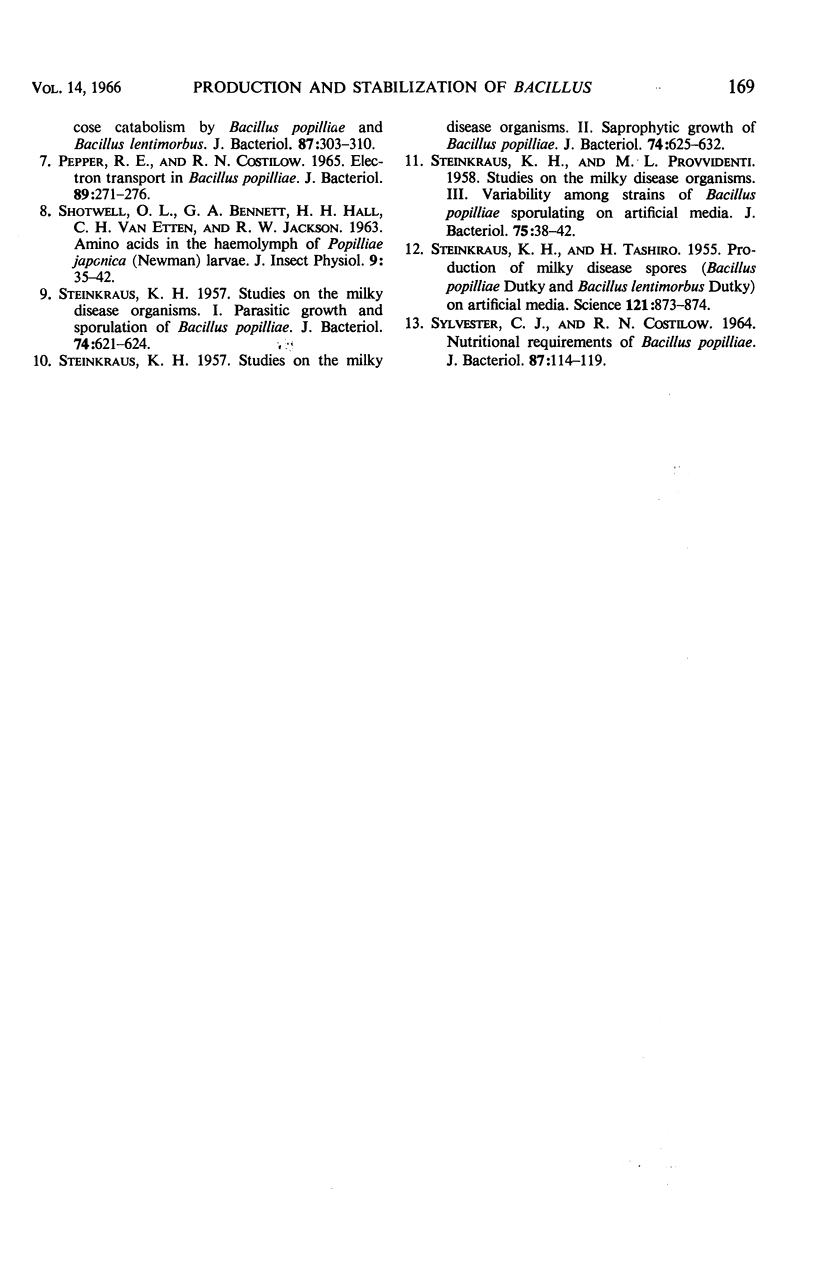
Images in this article
Selected References
These references are in PubMed. This may not be the complete list of references from this article.
- CORMAN J., TSUCHIYA H. M., KOEPSELL H. J., BENEDICT R. G., KELLEY S. E., FEGER V. H., DWORSCHACK R. G., JACKSON R. W. Oxygen absorption rates in laboratory and pilot plant equipment. Appl Microbiol. 1957 Sep;5(5):313–318. doi: 10.1128/am.5.5.313-318.1957. [DOI] [PMC free article] [PubMed] [Google Scholar]
- DAY L. E., COSTILOW R. N. PHYSIOLOGY OF THE SPORULATION PROCESS IN CLOSTRIDIUM BOTULINUM. I. CORRELATION OF MORPHOLOGICAL CHANGES WITH CATABOLIC ACTIVITIES, SYNTHESIS OF DIPICOLINIC ACID, AND DEVELOPMENT OF HEAT RESISTANCE. J Bacteriol. 1964 Sep;88:690–694. doi: 10.1128/jb.88.3.690-694.1964. [DOI] [PMC free article] [PubMed] [Google Scholar]
- DAY L. E., COSTILOW R. N. PHYSIOLOGY OF THE SPORULATION PROCESS IN CLOSTRIDIUM BOTULINUM. II. MATURATION OF FORESPORES. J Bacteriol. 1964 Sep;88:695–701. doi: 10.1128/jb.88.3.695-701.1964. [DOI] [PMC free article] [PubMed] [Google Scholar]
- PEPPER R. E., COSTILOW R. N. ELECTRON TRANSPORT IN BACILLUS POPILLIAE. J Bacteriol. 1965 Feb;89:271–276. doi: 10.1128/jb.89.2.271-276.1965. [DOI] [PMC free article] [PubMed] [Google Scholar]
- PEPPER R. E., COSTILOW R. N. GLUCOSE CATABOLISM BY BACILLUS POPILLIAE AND BACILLUS LENTIMORBUS. J Bacteriol. 1964 Feb;87:303–310. doi: 10.1128/jb.87.2.303-310.1964. [DOI] [PMC free article] [PubMed] [Google Scholar]
- STEINKRAUS K. H., PROVVIDENTI M. L. Studies on the milky disease organisms. III. Variability among strains of Bacillus popilliaze sporulating on artificial media. J Bacteriol. 1958 Jan;75(1):38–42. doi: 10.1128/jb.75.1.38-42.1958. [DOI] [PMC free article] [PubMed] [Google Scholar]
- STEINKRAUS K. H. Studies on the milky disease organisms. I. Parasitic growth and sporulation of Bacillus popilliae. J Bacteriol. 1957 Nov;74(5):621–624. doi: 10.1128/jb.74.5.621-624.1957. [DOI] [PMC free article] [PubMed] [Google Scholar]
- STEINKRAUS K. H. Studies on the milky disease organisms. II. Saprophytic growth of Bacillus popilliae. J Bacteriol. 1957 Nov;74(5):625–632. doi: 10.1128/jb.74.5.625-632.1957. [DOI] [PMC free article] [PubMed] [Google Scholar]
- STEINKRAUS K. H., TASHIRO H. Production of milky-disease spores (Bacillus popilliae Dutky and Bacillus lentimorbus Dutky) on artificial media. Science. 1955 Jun 17;121(3155):873–874. doi: 10.1126/science.121.3155.873. [DOI] [PubMed] [Google Scholar]
- SYLVESTER C. J., COSTILOW R. N. NUTRITIONAL REQUIREMENTS OF BACILLUS POPILLIAE. J Bacteriol. 1964 Jan;87:114–119. doi: 10.1128/jb.87.1.114-119.1964. [DOI] [PMC free article] [PubMed] [Google Scholar]



